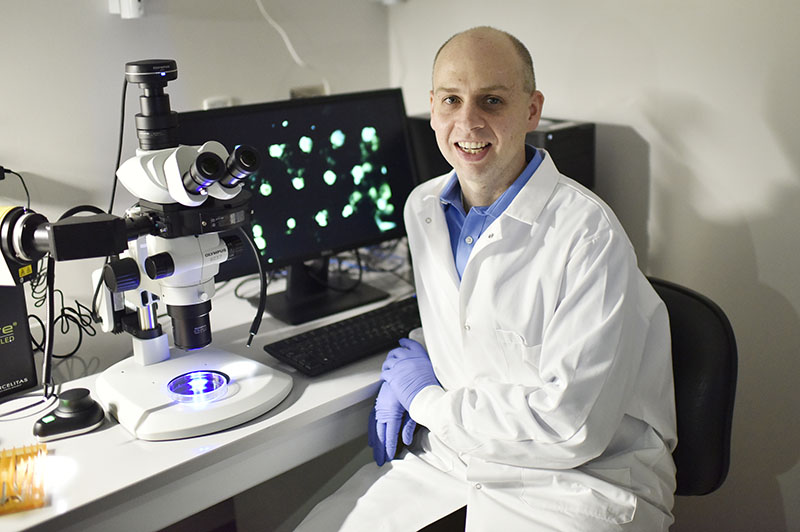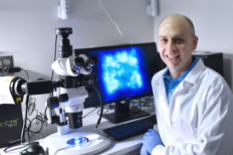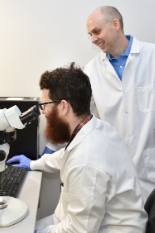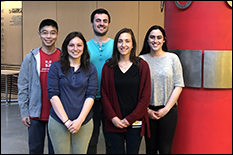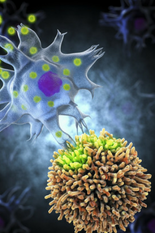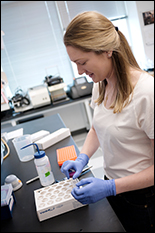News Story
New MS Treatment Approach Taps Skin’s Immune Cells

Dr. Robert “Smitty” Oakes
Robert “Smitty” Oakes, a postdoctoral researcher in Fischell Department of Bioengineering Professor Christopher Jewell’s Immune Engineering Lab, was awarded a three-year, $600,000 U.S. Department of Veterans Affairs Career Development Program Level 2 Award (CDA-2). This prestigious award will support Oakes’ transition toward developing an independent research laboratory.
Oakes was recognized for his continued efforts to advance treatments for multiple sclerosis (MS), an autoimmune disease that causes the body’s immune system to incorrectly recognize components of the central nervous system.
MS causes inflammation and destruction of myelin, the insulation that surrounds and protects nerve fibers. When this happens, nerve fibers and cells are damaged, leading to a loss of motor function and other neurological complications that greatly impact the patient’s quality of life.
Along with fellow members of the Jewell Lab group, Oakes has devoted much of his work to finding ways to “turn off” the harmful immune attack that occurs during MS, while leaving healthy functions of the body’s immune system intact.
Current therapies for MS broadly decrease the activity of the immune system, but at a cost that leaves MS patients vulnerable to infection. In searching for a way to decrease the harmful aspects of the immune system without eliminating the immune system’s helpful functions, Jewell and his team found inspiration in an unexpected source — how our bodies respond to infection.
Surprisingly, studies have shown that some of the defense mechanisms — toll-like receptors (TLRs) — we normally use to fight infection go haywire during autoimmune disease and are, in fact, overactive. Recognizing this, Jewell, Oakes, and members of the lab are working to target these pathways to block inflammation with the hopes that eliminating these harmful cues while delivering myelin cues might help promote a special kind of immune cells — regulatory T cells (TREGs). This could enable more specific control of MS or other autoimmune diseases.
“Achieving antigen-specific, or myelin-specific, tolerance is a transformative goal for improving the lives of over 2.3 million people with MS worldwide,” Oakes said. “However, this population level view does not convey the challenging journey of individual MS patients. Many patients must administer daily injections and therapeutics. At best, these treatments decrease disease severity, but they will not stop MS disease progression.”
Additionally, this lack of specificity may leave patients susceptible to opportunistic infections—a challenge that has proven even more significant during the COVID-19 pandemic, as patients with weakened immune systems from various treatments and diseases are at increased risk of severe illness, Oakes noted.
In the human body, the immune system detects antigens – molecules that are present on all cells and vary according to the type of cell – to distinguish the body’s own “self cells” from foreign cells. When functioning properly, the body’s immune system recognizes self cells by their self-antigens; this, in turn, means that foreign substances — such as bacteria, toxins, or a virus — stick out like a sore thumb, enabling the immune system to wage a specific attack and elimination.
Knowing this, the Jewell Lab group developed a nanotechnology platform whereby regulatory TLR cues are assembled with myelin self-antigens to ensure that immune cells receive both the regulatory cue and the self-antigen to promote myelin-specific TREGs.
Put simply, their aim is to harness the power of TLR signaling in order to wage a battle against MS while safeguarding the body’s own healthy cells.
To do this, the Jewell Lab developed polyelectrolyte multilayer (PEM) vaccine coatings built entirely from immune signals. These immune-PEMs (iPEMS) are self-assembled on nanoparticle templates during production. Then, the templates are dissolved to leave hollow micro- or nano-capsules that consist only of the cues that the lab wants to deliver.
Their technique offers hope: the group successfully demonstrated that administration of iPEMs containing regulatory TLR cues and myelin self-antigens eliminated and reversed MS-related paralysis in mouse models of the disease. But, while promising, the group’s studies showed that the effects were transient — in order to achieve the desired results, the research team had to administer several high doses of iPEM injections.
To overcome these challenges, Oakes is trying a new approach — one that delivers immune signals to what might be an unexpected place: the skin.
“The skin is our largest immunological organ, and it contains a high density of immune cells with specialized phenotypes that are constantly surveying the skin for foreign pathogens,” Oakes said. “Recent evidence indicates that some of these immune cells demonstrated a unique ability to promote regulatory cells that suppressed symptoms of paralysis in a common mouse model of MS. These exciting and recent results suggest that if the tolerance-biased immune cells in skin could be harnessed through their TLR signaling pathways, they could help achieve the goal of antigen-specific tolerance. Our approach using biomaterial technologies for controlled delivery to skin could also drastically improve MS patient quality of life as it would eliminate injections and the associated adverse events.”
Oakes’ hope is that this work could lead to treatment options that are easier for MS patients to administer themselves. This would also make treatments more accessible to patients in rural and underdeveloped regions to yield better outcomes overall.
Published September 3, 2020
